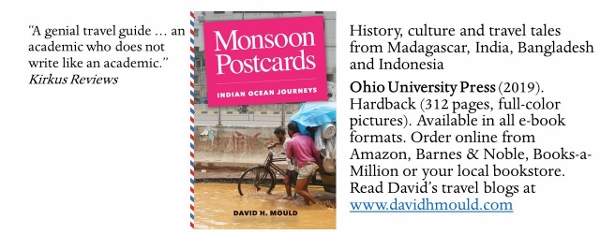What did the British leave behind when India and Pakistan gained independence in 1947? For almost 200 years of colonial rule, the British systematically exploited and exported the wealth and the people of the sub-continent. The decision to partition India into majority Hindu and Muslim states led to what historian Yasmin Khan describes as “ethnic cleansing on a gigantic scale,” with more than 12 million people fleeing their homes, and hundreds of thousands killed. More than half a century later, communal violence continues.
On the other side of the scale, historians point out that British rule stopped wars between princely empires and states, modernized the industrial economy, and created the civil service and an educated middle class. And then there were the railways, stretching the length and breadth of the country, expanding commerce and the movement of people. Among the most visually impressive legacies of colonial rule are the city railway stations, built in grand Gothic style with imposing domes and grand arched corridors.
Chennai Egmore, built in 1906-08 as the terminus of the South Indian Railway Company, is one of four intercity railway terminals in Chennai (Madras) and one of the city’s most prominent landmarks. It is the gateway to southern Tamil Nadu, a connecting point for passengers on north-, west- and east-bound trains. In 2003, when my wife Stephanie and I took a round-the-world voyage on the Semester at Sea program, we joined other faculty and adult passengers for a four-day trip through southern India. Our starting point was the night train from Chennai Egmore to Madurai, an eight-hour (350-mile) trip to the south.
In most Indian cities, the station is the center of activity, crowded with passengers, freight and mail, the platforms lined with small restaurants (vegetarian and non-vegetarian), stalls selling soda and water (no alcohol is allowed on Indian trains), cashews, and chips made from bananas and tapioca. The railway system seems to reflect India’s complex society: there are waiting rooms for each travel class, porters with red cloth headbands carrying luggage on their heads, beggars and businessmen, and a labyrinthine bureaucracy for buying tickets and making reservations. With 1.7 million workers, Indian Railways is the largest single employer in the country. Our first-class sleepers were a bit cramped, but at least the air-conditioning worked, and some of us snatched a few hours’ sleep.
At 6:00 a.m., the station at Madurai was busy as we dragged our overnight bags to the bus. Madurai is one of the seven sacred cities of India, and we spent the morning touring the huge Hindu temple of Sri Meenakshi with its 12 towers of brightly colored statues, hall of 1,000 pillars and central pool. Temples in India are—as much as mosques and perhaps more than churches—social centers, so the place was crowded with people, some of them worshipping, others begging, some just hanging out.
It is also a commercial center with stalls selling tourist trinkets—beads, wooden elephants, key rings and the like—along with religious objects. Almost every temple has a resident elephant, the physical embodiment of the god, Ganesh. The one at Sri Meenakshi will bless you and give you a nice wet back rub with its trunk for 20 rupees (about 40 cents).
After lunch, we set off towards the Western Ghats, the mountain chain that straddles the states of Tamil Nadu in the southeast and Kerala in the southwest. The road ran through villages with coconut trees and rice paddies, giving us our first glimpses of rural south India. The road was narrow, but crowded with buses, cars, trucks, people walking and cycling, and carts pulled by oxen. Some oxen sported brightly colored horns (blue, green or a rather stylish red, black and white tricolor design). Apparently, they’d been dressed up for a recent harvest festival. Our guide told us that politicians, appealing to illiterate voters, sometimes pay farmers to paint the horns in the party colors—political communication in its most basic form.
Climbing through the jungle on narrow, twisting roads, we reached the resort town of Thekkady. It is about 4,000 feet above sea level, cool and pleasant—a welcome change from the sweltering heat of the lowlands. Next morning, we took a two-hour boat ride on Lake Periyar, an artificial lake formed by a dam. Today, it’s a wildlife sanctuary, with a landscape rather like the Everglades; we passed dead trees still standing 20 years after being submerged.
We saw gray herons, bright green kingfishers, snake birds, cormorants, egrets, otters, wild boar, bison and elephants; the most exciting scene was when a mother elephant and her baby swam across the lake about 50 yards in front of the boat. We did not see tigers, which still live in this area of the highlands. The guide told us that one had been seen in late January near a lodge in the preserve, but tigers are reclusive. They usually don’t usually show up for the tourists.








